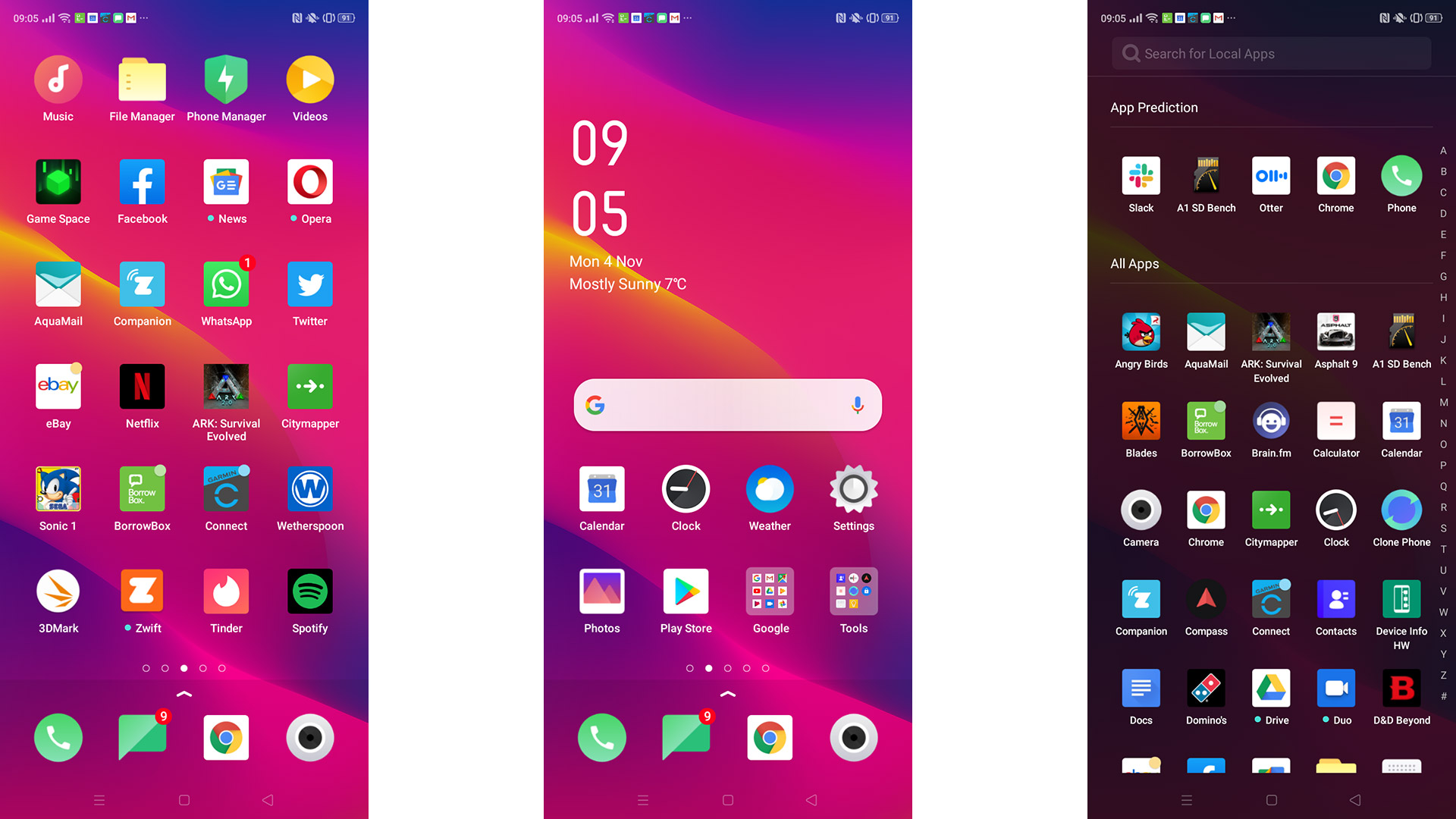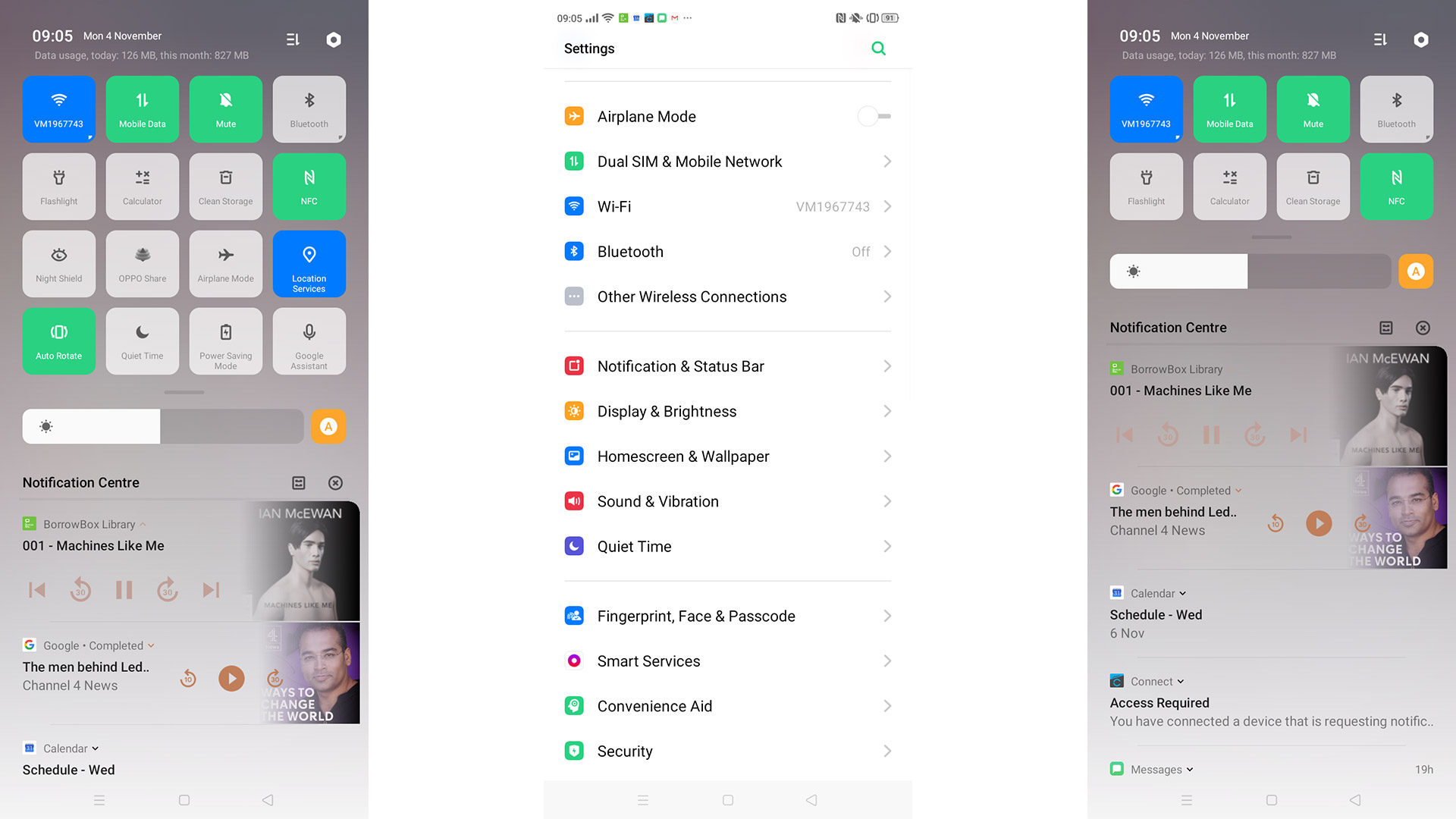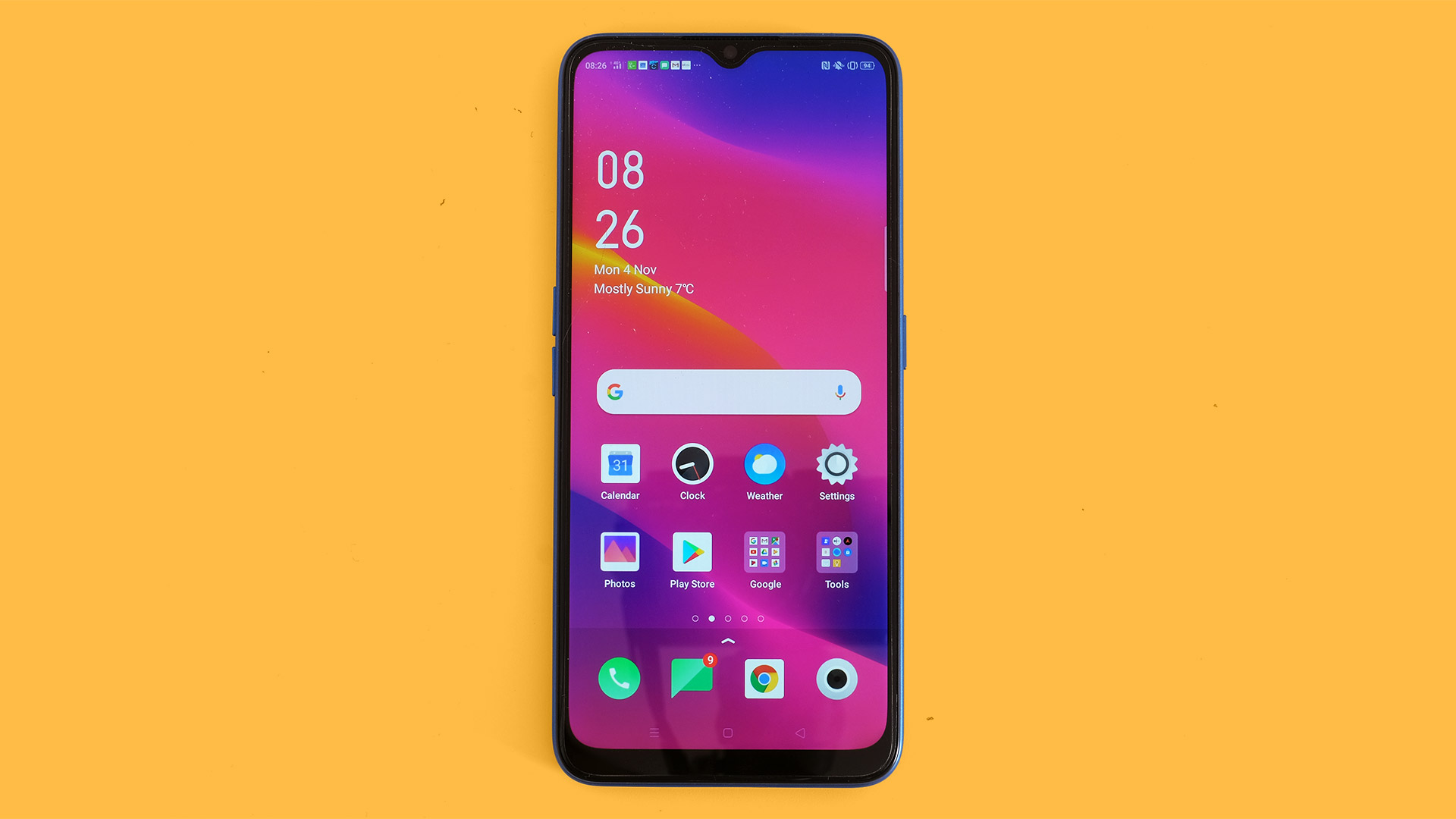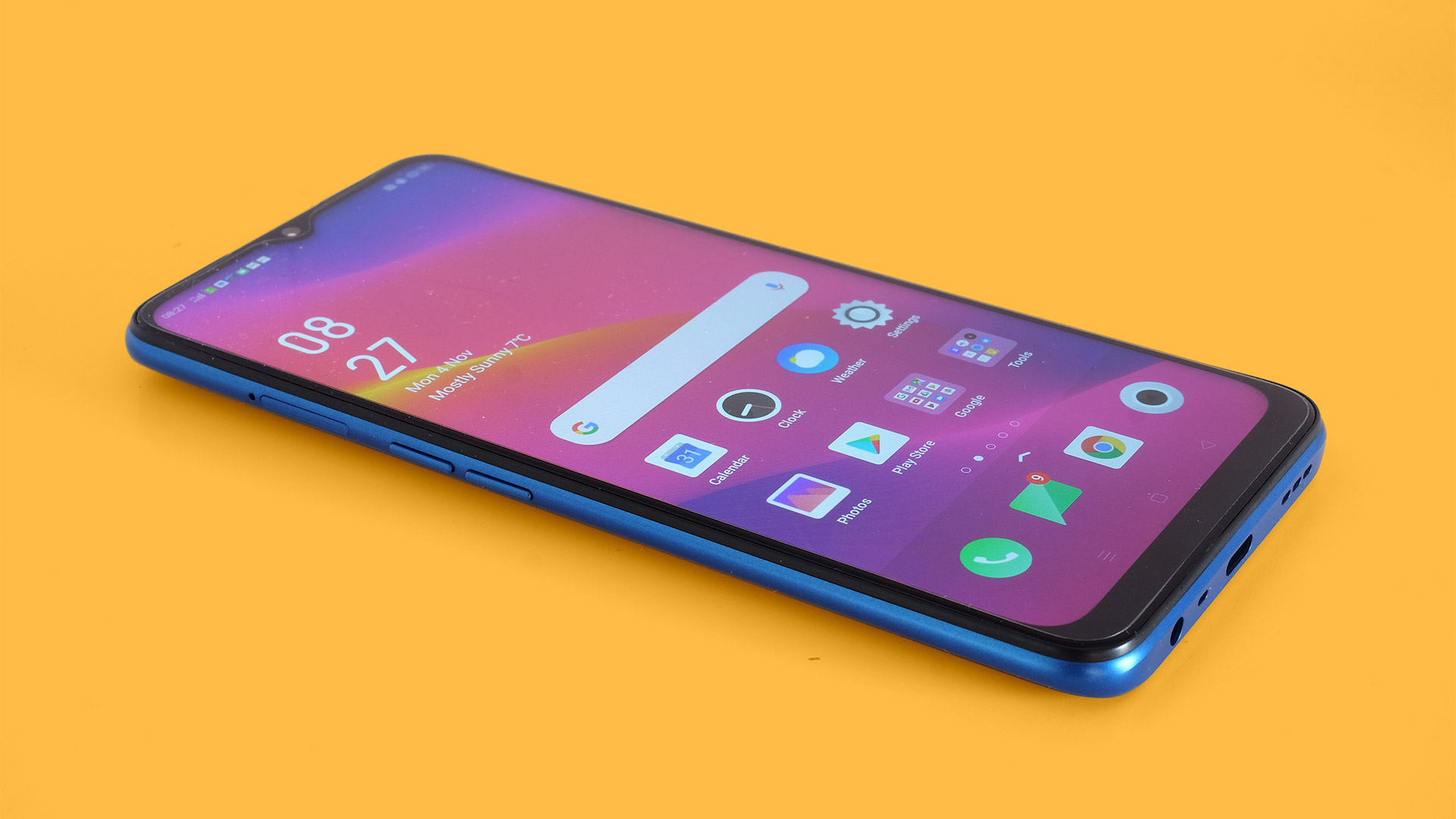Why you can trust TechRadar
Software
- Runs Android 9 overlaid with ColorOS 6
- The interface takes some getting used to but is generally good
The Oppo A9 2020 runs Android 9 and Oppo's ColorOS 6 interface. Switching to ColorOS can seem jarring at first, because it insists on using square app icons, which give it a stiffer look than the standard Google UI or Samsung’s.
However, we’ve spent quite a lot of time with the interface in the last few months, thanks to the Oppo Reno 2 and Reno 2 Z. Give it a chance to settle in and you’ll find this a perfectly reasonable UI. Oppo has made some sensible decisions in this particular version of it too.
The Oppo A9 2020 uses five rows of app icons in the app drawer rather than the usual four. This lets you pack each screen with shortcuts, and make it feel more like an enthusiast phone than a basic budget one. You can do the same with your home screens. Bump up to a 5x6 icon grid in Settings and it gets even more of a power user flavor.

Given this sensible use of space, one other part seems silly. The dock on your home screen uses a lot of room. This seemed silly at first, but after we’d tweaked the layout to fit in more icons, it hardly seemed our app library was wanting for room.
ColorOS 6.0 is stable, and because the add-ons are fairly conventional, nothing sticks out too much. There’s a mode that kicks in when you play a game, designed to optimize performance and weed out distractions. A Smart Assistant homepage sits to the left of your primary one, but you can ignore it if you like. We used it to check our step count a few times.
There’s also a shortcut bar, accessed by flicking from the side of the screen. Again, we didn’t find this particularly useful, but you can ignore it or disable it if you like.

Movies, music and gaming
- Decent screen and speakers for media
- Chipset struggles with demanding games
The Oppo A9 2020 is a great budget phone for video and gaming even if it doesn't have the highest-quality display or the most powerful processor. This is thanks to the size of the screen.
6.5 inches is a (relatively) huge space for such content to stretch out, and it makes video in particular instantly more engaging.
We are also very glad to see the Oppo A9 2020 has already been certified for Netflix HD streaming (720p). The Reno 2 Z wasn’t the last time we checked.
Even the Oppo A9 2020’s speakers are surprisingly capable. There’s one driver on the bottom and another above the screen, for stereo sound. Audio quality is better than we expected. Given how hard Oppo has pushed in some areas, the speakers seemed an obvious area to take a hit.
They have fairly good top volume and admirable presence and projection, although they don’t have the same lower-end punch or mid-range warmth some much higher-end phones offer. We’re more than happy considering the price, though.
The Oppo A9 2020’s position as a budget gaming star comes with caveats. This phone has a lower-mid-range processor, and it is not made to handle the most demanding Android games with visuals maxed.
PUBG will only play at ‘Low’ graphics, and ARK: Survival Evolved does not run well set to ‘Epic’ graphics. You need to reduce fidelity to get a smooth look.

Performance and benchmarks
- Snapdragon 665 chipset and 4GB of RAM
- Performance is as you'd expect for the price
The Oppo A9 2020 has the Qualcomm Snapdragon 665 chipset. This is an octa-core CPU based around Kryo 260 cores. Four are ‘gold’ performance cores, the other four are less powerful ‘silver’ ones.
Motorola uses the same CPU in the Moto G8 Plus, which tells you this is a solid mid-range chipset. Moto G phones tend to have solid CPUs. It earns the Oppo A9 2020 1,307 points in Geekbench 5 (311 per core).
This is just the kind of processor you might expect in a phone hovering around $250/£250. It can’t play every game perfectly if you max out the graphics settings, but it easily has enough power to run Android well.
The phone has 4GB of RAM, which is consistent with the price. But can you get more elsewhere?
The Xiaomi Mi 9T is a little more expensive but gets you an upgrade to the Snapdragon 730, and its GPU is almost twice as powerful. However, the similarly priced Samsung Galaxy A40 is much less powerful. The Honor 20 Lite’s Kirin 710 GPU is roughly comparable, but we are still reluctant to recommend Honor and Huawei phones given the ongoing effects of the Huawei ban.
Andrew is a freelance journalist and has been writing and editing for some of the UK's top tech and lifestyle publications including TrustedReviews, Stuff, T3, TechRadar, Lifehacker and others.

